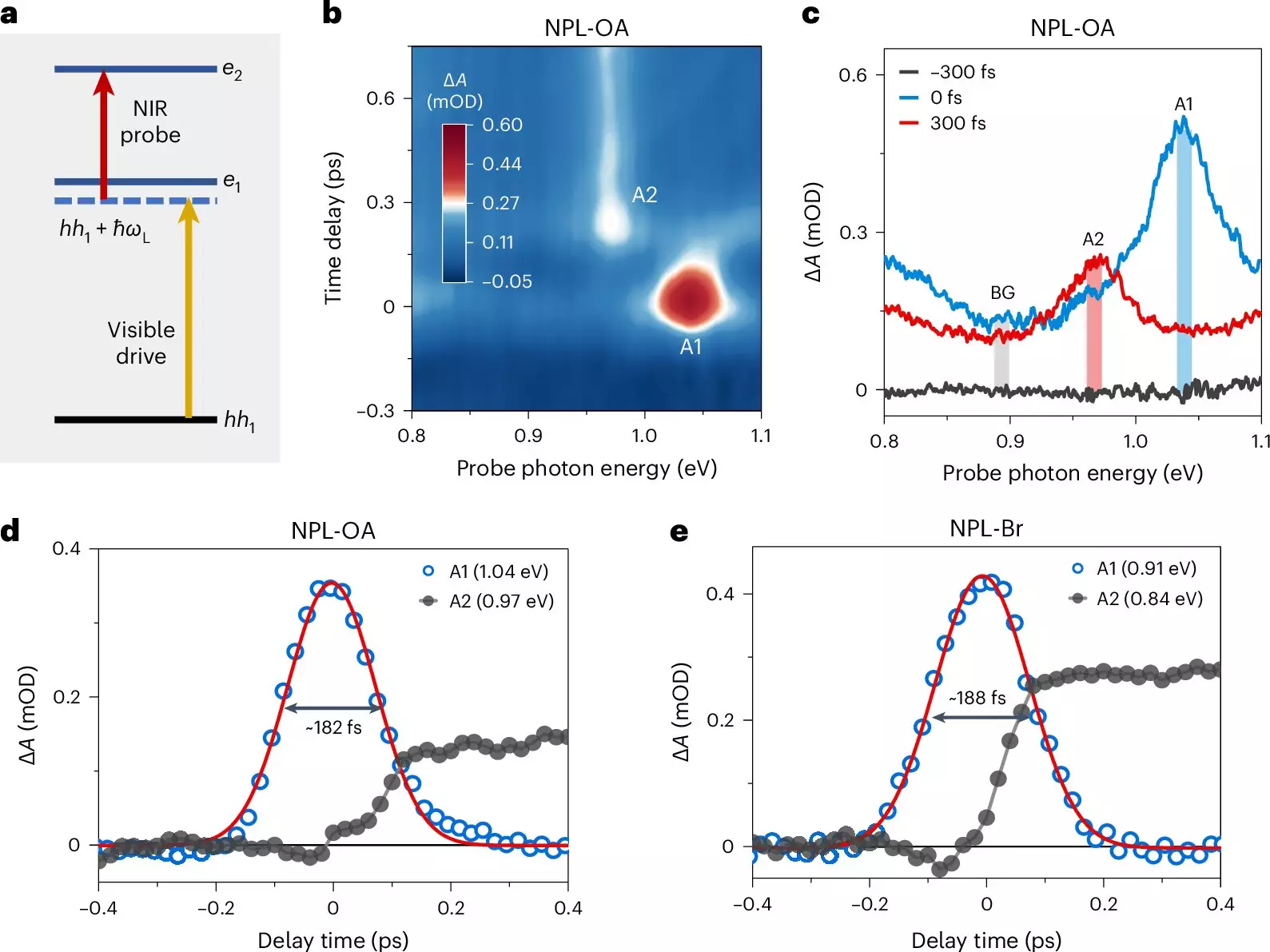Colloidal quantum dots (QDs) have emerged as a highly fascinating category of semiconductor nanocrystals, distinguished not only by their unique size-dependent optical properties but also by their potential applications in various fields, including optoelectronics, photonics, and quantum computing. Until the advent of quantum dots, the theoretical framework surrounding size-dependent quantum effects was far from materialization in physical embodiments. QDs mark a significant breakthrough, bridging the gap between theoretical quantum mechanics and practical application. The ability of these nanocrystals to emit light in different colors based solely on their size is a mesmerizing demonstration of the quantum size effect—this characteristic transforms them from mere theoretical constructs into tangible objects that hold immense promise in next-generation technological applications.
As research evolves, the drive to explore exotic quantum phenomena using QDs has intensified. Scientists are keenly interested in uncovering effects such as single-photon emission and the manipulation of quantum coherence. A significant concept in this exploration is the Floquet states, which refer to photon-dressed states arising from coherent interactions between light and matter. Although Floquet states are a critical part of theoretical discussions in quantum mechanics, their direct experimental observation has largely remained elusive. Historically, studies aimed at observing these states have been conducted in carefully controlled environments characterized by low temperatures and high vacuum conditions, utilizing specially tuned light fields in the infrared, terahertz, or microwave ranges.
Recent advancements, however, are changing the narrative. In a notable publication from *Nature Photonics*, an influential study led by Prof. Wu Kaifeng at the Dalian Institute of Chemical Physics shed light on this previously elusive phenomenon. This groundbreaking research presented the first direct observation of Floquet states in semiconductor materials through an innovative all-optical spectroscopy technique. Uniquely, the experiments were conducted in ambient conditions, representing a significant departure from traditional methods that required extreme environments. By employing quasi-two-dimensional colloidal nanoplatelets, which have been developed over the past decade, their team demonstrated a robust interaction between optical transitions within the visible and near-infrared ranges.
The team’s approach centered around exploiting strong quantum confinement effects that occur within the thickness of these nanoplatelets. This design leads to interesting interband and intersubband transitions, effectively establishing a three-level system. A visible photon interacts with a heavy-hole state, facilitating its transition into a Floquet state. Notably, this Floquet state can then be accessed via a near-infrared photon, enhancing our ability to probe and manipulate these innovative quantum states. Contrary to earlier assumptions that Floquet states faded quickly after transient population, the researchers, instead, recorded their persistence and transformation into real populations within hundreds of femtoseconds—a finding that defies existing expectations and opens new avenues for understanding quantum evolution.
The significance of this research extends beyond the mere observation of Floquet states. It provides a fresh perspective on the spectral and dynamic physics inherent to these quantum states, illustrating the vast potential they hold for dynamically controlling optical responses and coherent evolution within condensed matter systems. Prof. Wu’s team asserts that the findings underscore a pivotal stride in Floquet engineering by seamlessly integrating colloidal materials into studies that were previously dominated by stable solid-state configurations. This progression is expected to facilitate innovative approaches for controlling surface and interfacial chemical reactions utilizing nonresonant light fields.
The exploration and direct observation of Floquet states in colloidal quantum dots signify a transformative leap in the field of quantum science. By achieving this feat in ambient conditions, researchers have not only expanded the boundaries of Floquet engineering but also enriched the potential for practical applications across photonics and quantum technology. With ongoing investigations and advances in nanocrystal fabrication, QDs could play an increasingly vital role in ushering in new technologies that leverage quantum mechanics for unprecedented innovations in both industry and academia.


Leave a Reply